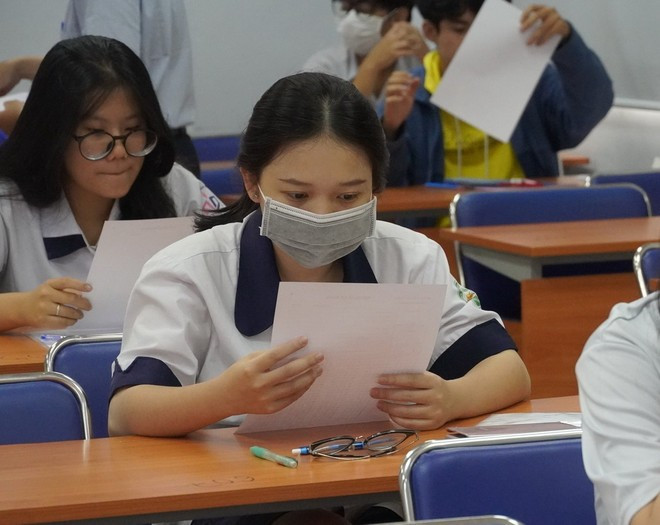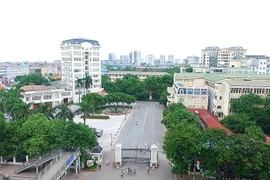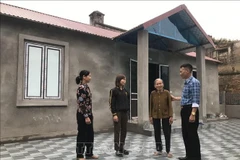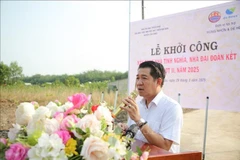Hanoi (VNA) – By 2030, Vietnam’s higher education is expected to feature a 70% public and 30% non-state institutional structure. By 2050, private institutions and branches of foreign universities will account for half of the higher education landscape.
Public universities will maintain a dominant role, while private and non-profit private institutions will be encouraged to diversify, elevating the country’s educational offerings.
These are among the main points in the Prime Minister-approved master plan for the network of higher education and teacher training institutions for the 2021–2030 period, with a vision towards 2050.
Promoting growth, reform
The overarching objective for 2030 is to enrol over 3 million students, with 260 undergraduate students and 23 postgraduates per 10,000 people. The university enrolment rate for the 18–22 age group is expected to reach 33%, with no province having a rate below 15%. By 2050, this rate is set rise to 45–50%. The structure will align with the needs of a knowledge-driven economy. Development space will be expanded while capacity building boosted so that higher education institutions will reach world-level advanced standards, creating a key competitive edge for the country and serving as the pivotal driver for national development.
To achieve these goals, the educational network will be restructured in terms of the proportions and roles of public and private education, levels of training, and fields of operations.
Specifically, by 2030, public universities will account for 70% of the total training capacity nationwide, play a leading role in providing highly-skilled human resources for national development and ensuring equitable and favourable access to higher education for all citizens.
Private and not-for-profit private higher education institutions will make up around 30% of the total training capacity. They will play an important role in diversifying higher education services and flexibly meeting the needs of learners and the labour market.
Between 50 and 60 higher education institutions will offer doctoral programmes, with approximately 50% focusing on research-oriented development. These schools will serve as the core of the network for training and nurturing talent linked to scientific research, technological development, and innovation.
Higher education institutions will be reorganised to enhance capacity at existing establishments, with those failing to meet standards to cease operations 2030. The number of public higher education institutions will be streamlined, while branch campuses restructured. The expansion of private educational institutions will be encouraged, as will new branches of prestigious foreign universities.
By 2050, the network of higher education institutions will be largely stable in terms of quantity and spatial distribution, with a reduction in the number of public institutions and an increase in private institutions, particularly non-profit private ones.
Higher education facilities will be upgraded, expanded, and modernised in accordance with international standards to provide training for over 3.6 million learners, approximately 50% of which will enrol in private institutions. The proportion of master's and doctoral training will reach the average level of high-income countries.
Promoting development of national, regional universities
Significant investments will go into developing national and regional universities, aiming to meet international standards.
Leading institutions like the Vietnam National Universities in Hanoi and Ho Chi Minh City are set to be among the top universities across Asia. Additionally, Hue University and Da Nang University will be elevated to the national status, contributing to the formation of a robust network of regional higher education institutions.
The plan also envisions upgrading universities in key regions, including the northern midland and mountainous region, the central coast, the Central Highlands, and the Mekong Delta. Emphasis is placed on such fields as technology, teacher training, and others matching each region’s demand.
By 2050, priority will continue to be given to developing national, regional, and key higher education institutions into world-class training and research centres, especially in the fields of science, technique, technology, and health care – phamarceutical.
Regional university networks to take shape
According to the plan, networks of higher education institutions for regions and sub-regions will be formed, with national universities, regional universities, and key higher education institutions at the core. These networks will strengthen collaboration and connect with research facilities, industrial zones, and businesses, creating a driving force for the economic and social development of the regions and surrounding areas.

Specifically, higher education networks will be developed in the northern midland and mountainous region (centred around Thai Nguyen and Son La, with a priority on expanding the network in the northwestern region), the Red River Delta region (centred around Hanoi and Hai Phong), and the north-central, central-central, and south-central subregions (centred around Nghe An and Thanh Hoa, Hue and Da Nang, Khanh Hoa and Binh Dinh). As well, the networks for the Central Highlands region (centred around Dak Lak and Lam Dong) and the southeastern region (centred around Ho Chi Minh City and Binh Duong) will take shape. Finally, another for the Mekong Delta region will be designated, with Can Tho as its hub.
To establish these regional networks, universities will expand their campuses. The relocation of higher education institutions from the central areas of Ho Chi Minh City to newly planned zones in the city and surrounding provinces such as Binh Duong, Dong Nai, and Long An will continue. Similarly, institutions in Hanoi downtown will be moved to newly planned areas of the city and neighbouring provinces such as Ha Nam, Hung Yen, Bac Ninh, and Vinh Phuc.
In parallel with the formation of these regional university networks, large higher education hubs will be established in four major urban regions centring around Hanoi, Ho Chi Minh City, Da Nang, and Can Tho.
Networks of universities in key sectors to be developed
A major feature of the master plan is the establishment of university networks for key sectors, particularly health care.
A priority is to expand the network of healthcare education institutions, with a goal of training 180,000 to 200,000 students in health-related disciplines by 2030, meeting the rising demand for healthcare professionals.
The plan will focus on selecting and investing big in three to five leading public higher education institutions in terms of research and training in the healthcare sector. Alongside these establishments, certain national and regional universities which are designated as key institutions in medical and pharmaceutical fields will serve as the nuclei of this network.
In addition to health care, networks of higher education institutions will be developed in other important fields, in line with the country's development strategy and strategies for socio-economic sectors, particularly the industries and sectors that require development priority under the Government's action plan to implement the Party's resolutions.
Digital university era
Another forward-thinking aspect of this transformation is the integration of digital technologies in education. By 2030, all universities in Vietnam will offer remote and online learning programmes. The digital university model, embracing the latest technologies in both teaching and administration, will become an essential pillar of the national education system. By 2030, digital education is set to account for 30% of all higher education, based on the recognised credits.
Looking ahead to 2050, the proportion of digital education will increase to 50%, cementing its role as a pillar of Vietnam’s higher education system./.




























